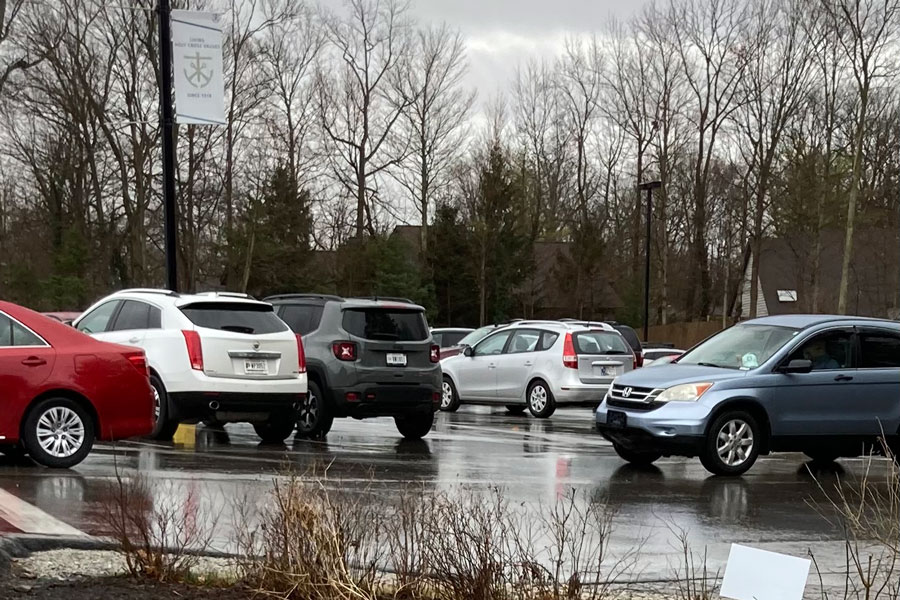Students with licenses adjust to new state law
Bamrick says legislation focuses in part on younger drivers
Students drive out of the H lot after school. If those drivers are following state law, they will not have a phone in their hands while they are on the road.
Student drivers continue to adjust to a new law in Indiana that prohibits having their cell phone in their hands while they are driving.
Mr. Greg Bamrick, director of transportation and driver education instructor, explained the new law. He said, “We had a law previous to this one where there was no texting and driving. Police officers would pull people over for having their cell phone in their hand and tell them they’re going to get a citation for texting and driving.”
Bamrick said that because so many people would respond saying that they were not texting and that they were looking at Google Maps, the enforcement of that law was very difficult for police officers. Bamrick said, “So the state legislature got together and said that your phone cannot be in your hand at all.”
This law is not something too new, as it is already in effect in other states. Bamrick said, “Indiana’s kind of late to the game with this law. Many other states across the country have had this law in the books for eight or nine years now.”
As a driver education instructor, Bamrick said the new law has influenced his lessons with his students. “Every July, new laws come to the books in Indiana. This one has definitely been a talking point that we use not only in our online program, but also in the car, as we instruct kids on their on-road experience,” he said.
Bamrick said the law is especially important for new drivers who have less experience on the road. He said, “I think this law was intended a lot for adolescents, because the phone is so crucial to them. It’s intended to keep the focus on the road and not on our text messages, social media, and all that. I think this will affect young drivers more and is there to help them put the phone down.”
Cell phones are so important to our daily lives but often hinder driving ability.
Bamrick said, “The phones, not only for Cathedral students, but for a lot of us, regardless of age, are so vital for communication. And for things like Google Maps, they have become like a part of us. In terms of driving, though, we need to keep two hands on the wheel. That’s the big intent of this law: to train our young drivers to keep both hands on the wheel and pay attention.”
Bamrick said that he thinks that not all students or drivers in Indiana know about the law. “That’s why you’re starting to see billboards all over Indiana about it. The Department of Transportation is starting to educate us as drivers. One way to do that is to make sure that we’re aware of this law,” he said.
Bamrick also warned against distracted driving as a whole. He said, “It’s not only about just having a phone. What’s the difference between holding a phone or having a Big Mac in your hand and trying to eat and drive at the same time? Or if you’re reaching down trying to get your Diet Coke? It’s about keeping both hands on the wheel, which hopefully will keep the focus on the road and not on everything else we bring into the car.”
The no-phone law may have a larger effect on how people approach driving as a whole. Bamrick said, “I think this law is the beginning of pre-planning your trip, which is something we talk a lot about in our driver ed program. Pre-plan your trip so that you aren’t dependent on technology or a map. Look at the map on your phone ahead of time, so you know the major turns you’ll have to do. This (law) is step one of trying to pre-plan a little bit, before you even turn on the ignition.”

Senior Emma Kress is a reporter on the Megaphone staff. She runs cross-country and participates in crew for theater. Outside of school, she participates...







